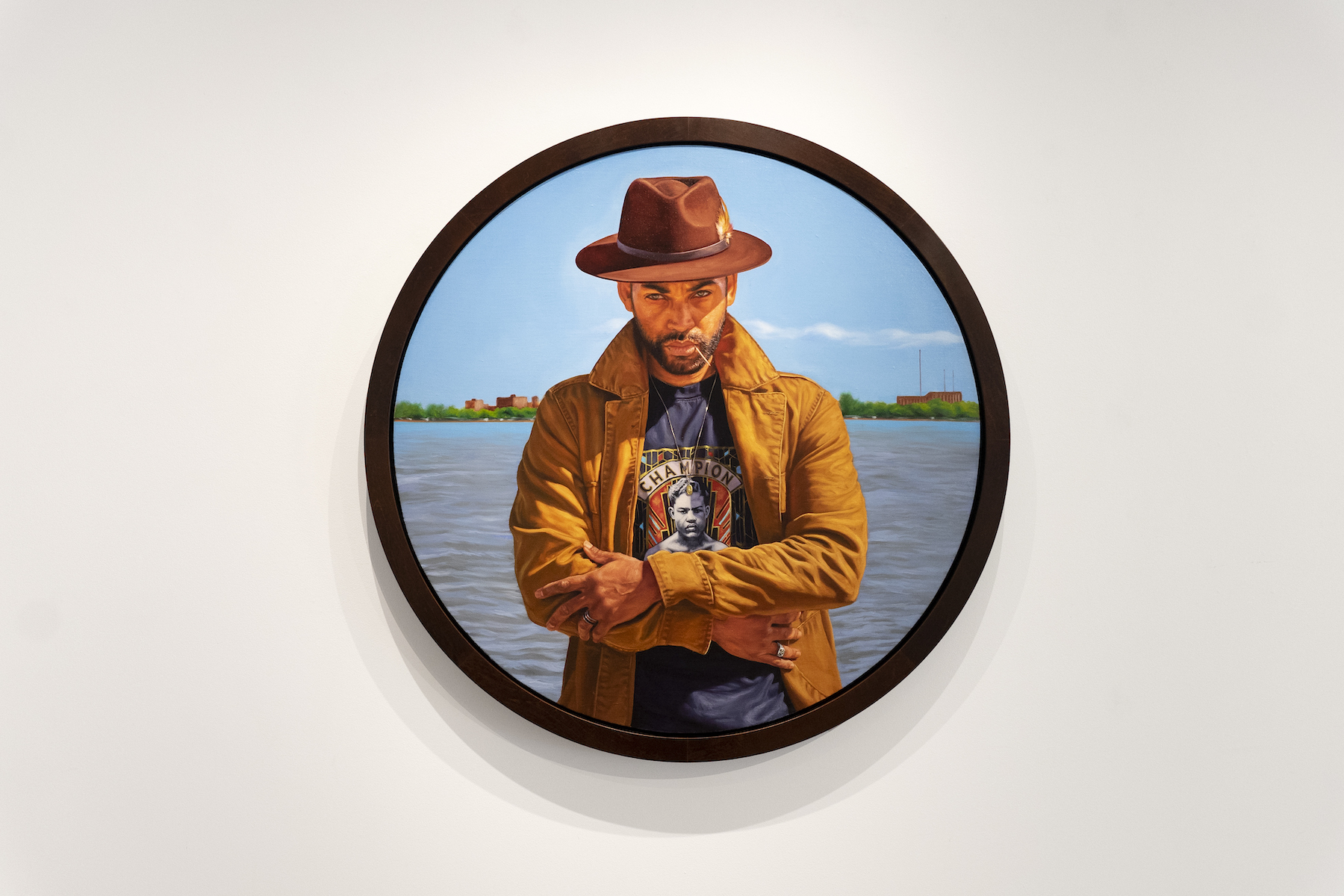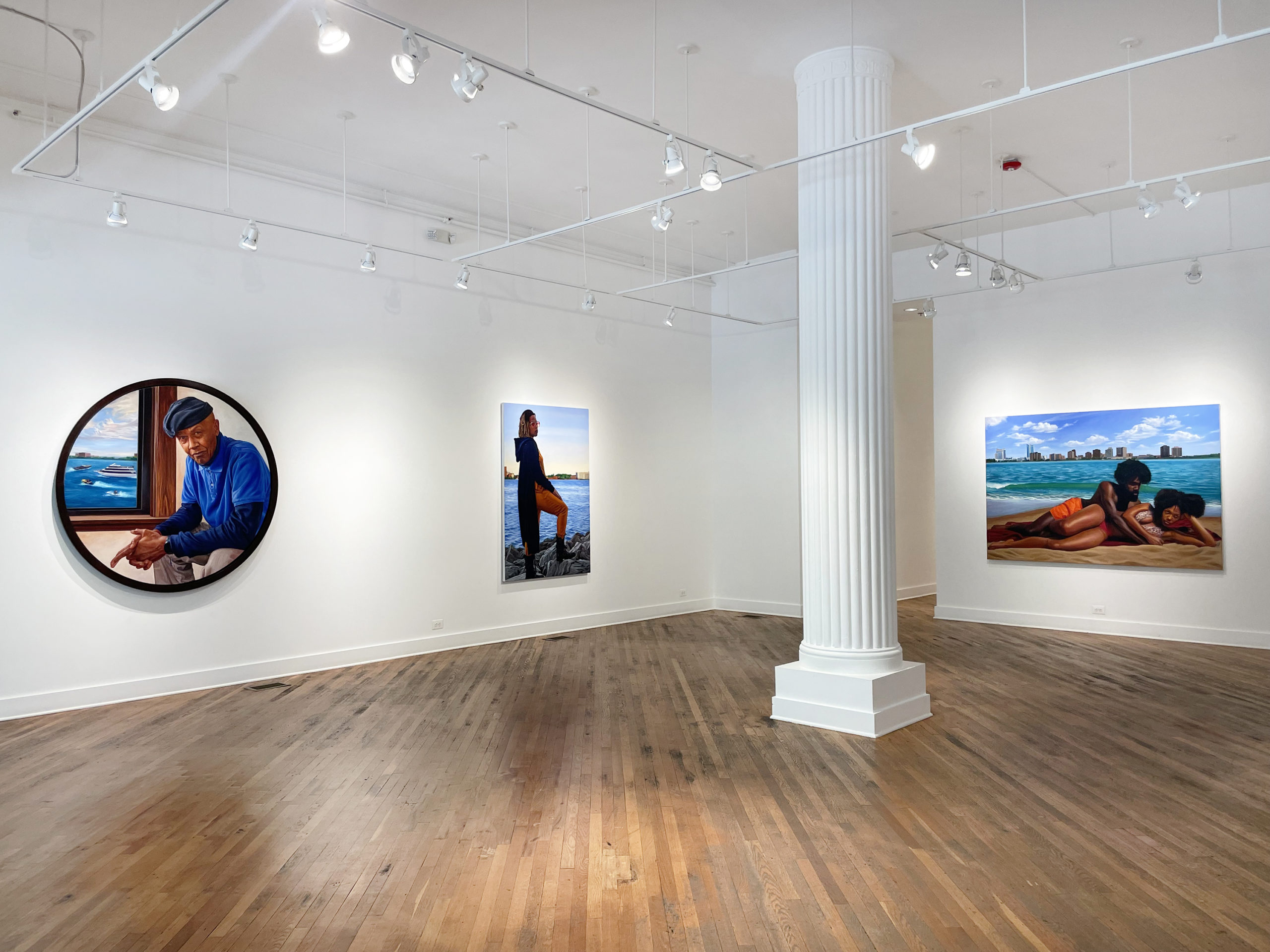Artist Mario Moore Explores Detroit’s Black Abolitionist Movement in New Exhibit
David Klein Gallery, 1520 Washington Boulevard, Detroit, Michigan, is pleased to announce the opening of Midnight and Canaan, a presentation of new paintings and silverpoint drawings by the Detroit based artist, Mario Moore. The exhibition will also feature the premier of “Take Flight” a short film directed by Danielle Eliska Lyle and produced by Mario … Continued


David Klein Gallery, 1520 Washington Boulevard, Detroit, Michigan, is pleased to announce the opening of Midnight and Canaan, a presentation of new paintings and silverpoint drawings by the Detroit based artist, Mario Moore. The exhibition will also feature the premier of “Take Flight” a short film directed by Danielle Eliska Lyle and produced by Mario Moore.
Mario Moore has a passion for digging into the past to find the stories that are the foundation of his beautifully rendered paintings. Extensive research of the subject matter is a fundamental component of his practice. Moore’s previous series have included examinations of the role of African Americans in the Civil War, the presence of African Americans at Princeton University and his family’s history in Detroit. Inspired by the study of “A Fluid Frontier: Slavery, Resistance and the Underground Railroad in the Detroit River Borderland,” Wayne State University Press, Moore’s research for the Midnight and Canaan exhibition led him to navigate the history of the Underground Railroad in the Canadian border cities of Detroit, Michigan and Windsor, Canada. Moore was particularly drawn to the compelling story of the anti-slavery activists, Thornton and Lucie Blackburn. The Blackburn’s had escaped slavery in Kentucky but after two years of freedom they were recaptured in Detroit. Their incarceration inspired the local Black community to come together in protest resulting in the Blackburn Riots of 1833. (This is recognized as the first instance of a race riot in the United States.) Ultimately the Blackburn’s succeeded in their quest for freedom and settled in Toronto where they built a home and a prosperous business.
I found stories that were often buried or ignored in American’s collective understanding of our history. In particular, the story of Thornton and Lucie Blackburn, a brave, empowered young couple who escaped enslavement from Kentucky to Detroit and later settled in Canada, was a cornerstone in my understanding of Detroit’s Black militancy…. Mario Moore, 2022
Moore presents his images of the Blackburn’s in the present day. In the large-scale painting, Lucie and Thornton Blackburn’s Arrival in Midnight, they are dressed in contemporary attire, lying on a sunny beach with a view of the Windsor skyline behind them. In Thornton and Lucie Blackburn in Canaan, we see them again lying on a beach but now it is nighttime, and the city of Detroit is on the horizon with the fires of the 1833 riot lighting up the sky.

This new body of work I’ve created for Midnight and Canaan challenges the viewer to consider who the Black pioneers in Detroit were before the Great Migration. It asks the viewer to contemplate the challenges, stamina and willpower of Black people from the past and present within these two cities. What does the future hold for Black populations on this international border?…Mario Moore, 2022
The city of Detroit (“Midnight”) was one of the last stops on the Underground Railroad before reaching freedom in Canada (“Canaan”). A critical station on the journey to freedom was the Second Baptist Church in Detroit, distinguished as the first Black congregation in Michigan. For over 30 years the church sheltered thousands of escaped slaves as they made their way to Canaan. Abolitionist leaders including Sojourner Truth and Frederick Douglass worked with the church and its anti-slavery organizations on their mission to bring escaped slaves to safety and freedom. It is estimated that 200 Underground Railroad stations existed in Michigan from the 1820s until 1865 when slavery was abolished. In his research, Moore became familiar with the stories of the prominent figures active in Detroit’s Underground Railroad network, notably William Lambert and George de Baptiste. Their portraits, along with that of Sojourner Truth are featured in this exhibition.
Mario Moore, a Detroit native, received a BFA from the College for Creative Studies, Detroit, MI and an MFA in Painting from the Yale School of Art, New Haven, CT. In addition to the Hodder Fellowship residency at Princeton, he has been awarded residencies at Duke University, Josef and Annie Albers Foundation, Fountainhead, and Knox College. Moore’s work is in the collections of
the Detroit Institute of Art, Princeton University Art Museum, The Studio Museum in Harlem, the Mott-Warsh Collection, Louisiana State University Museum of Art, Winston Salem State University, and Knox College.
Moore’s work has been widely exhibited including at the Charles H. Wright Museum, Detroit; The Detroit Institute of Arts; The Lewis Center for the Arts at Princeton University, NJ; the Smart Museum of Art, Chicago, IL; Cranbrook Art Museum; David Klein Gallery, Detroit, MI; The Urban Institute of Contemporary Arts, Grand Rapids, MI; Arthur Roger Gallery, New Orleans, LA; The Cleveland Museum of Art, Colby College Museum of Art and is currently in the Smithsonian Sites Exhibition (traveling), Men of Change. His solo exhibition, Enshrined: Presence & Preservation opened at the Charles H. Wright Museum of African American History, Detroit in June 2021 and at the California African American Museum (CAAM) in March 2022.
Mario Moore lives and works in Detroit. He is represented by David Klein Gallery.







